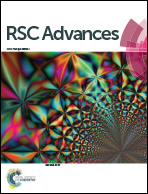Rapid differentiation of microbial cultures based on the analysis of headspace volatiles by atmospheric pressure chemical ionization mass spectrometry†
Abstract
We report the direct analysis of volatile compounds emitted by microorganisms using atmospheric pressure chemical ionization mass spectrometry (APCI-MS) with atmospheric corona discharge as a source of primary ions. APCI-MS fingerprinting of headspace volatiles was used to differentiate nine microbial cultures without any sample pretreatment, chromatographic separation and wet chemistry using ion trap detection.


 Please wait while we load your content...
Please wait while we load your content...